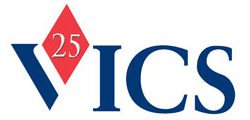StealthID Solutions delivered the largest US deployment of item level inventory visibility for Bloomingdales/Macy’s. As a result, StealthID Solutions has been able to learn the ins and outs of a major EPC enabled RFID implementation including what is takes to make a solution both effective and scalable. We provide apparel RFID expertise for retail and supply chain item level inventory accuracy. We create greater visibility, increasing both top and bottom line profits, through RFID business guidance, leadership, and RFID engineering design. Whether it be a big-box retailer or a small, single-door, single-floor boutique, we know what it takes to make RFID work.
Stealth is also a member of the VILRI committee for VICS and is a member of GS1. Through these organizations, StealthID Solutions is helping to create standardization for the use and application of RFID throughout the supply chain. Our knowledge and capability is helping to shape a better and more consistent application of RFID to help everyone in every stage of distribution to be better operators and as a result, generate more profit.
“Bloomingdale’s, a leading upscale department store in the United States with more than forty stores nationwide, recently announced the results of a thirteen-week RFID trial conducted in the fall of 2008. The project was executed in conjunction with the ITRI (Information Technology Research Institute) at the Sam M. Walton College of Business at the University of Arkansas.
The fact that Bloomingdale’s waited more than six months to discuss its pilot publicly underscores the tight-lipped nature of retailers with regard to their adoption of RFID. Significant vendors involved with the project include Avery Dennison (EPC Gen 2 Passive UHF RFID Tags), Motorola (EPC Gen 2 Passive RFID Readers), and Vue (software). Stealth Network Communications provided the project management and system integration support.
The pilot test compared the inventory accuracy of an item-level RFID system installed in a Bloomingdale store located in a major metro area in the northeastern United States to that of a store in a similar location utilizing existing barcode technology. Men’s and women’s jeans were tagged during the study with between 8,500 and 10,000 items tracked at any given time, depending on sales activity. Products were tagged upon entry to the retail outlet.
The results of the project demonstrate RFID’s ability to improve inventory accuracy significantly in retail environments. In the test store utilizing RFID, 10,000 items could be scanned in just two hours, compared to fifty-three hours in the control store employing a barcode system. Ultimately, RFID facilitated a 27% improvement in inventory accuracy and a 96% reduction in cycle counting time.
While loss prevention was not a major focus of the pilot, results indicate that RFID is useful in deterring theft. Although Bloomingdale’s has not announced plans to expand pilot testing of item-level RFID, the results of the company’s initial evaluation are compelling and likely will warrant additional exploration.”
-Michael Liard – Practice Director, ABI Research
 English
English Español
Español Français
Français Italiano
Italiano 中文(简体)
中文(简体) Nederlands
Nederlands Deutsch
Deutsch Cрпски језик
Cрпски језик Română
Română Svenska
Svenska

